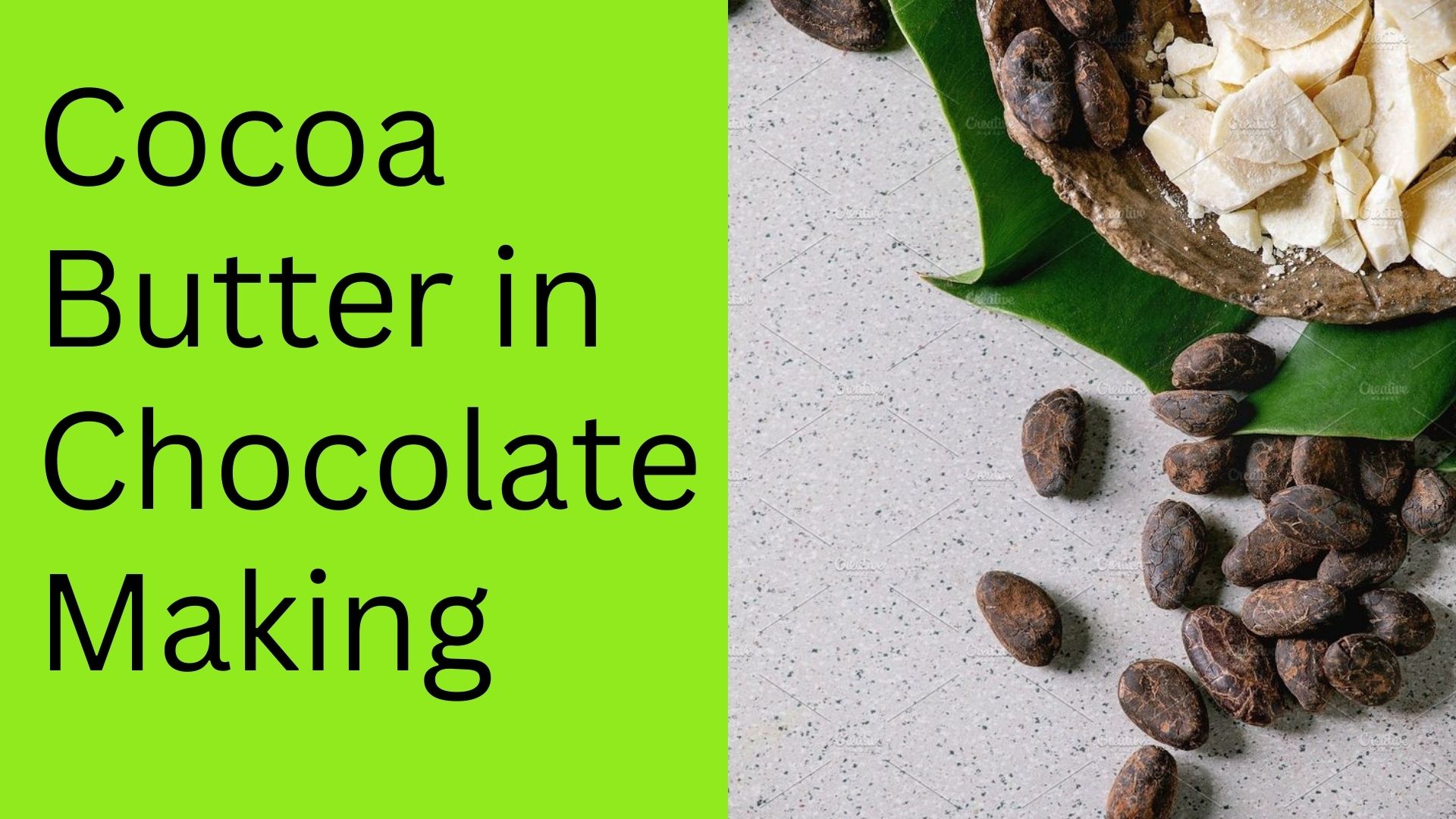Cocoa butter plays a crucial role in chocolate making, contributing to its smooth texture and luxurious melt-in-your-mouth quality. However, there are times when alternatives to cocoa butter are sought after, either for dietary preferences or availability of ingredients. Discovering these substitutes allows for flexibility in creating delectable chocolates without compromising on taste and quality.
Purpose of Cocoa Butter in Chocolate Making:
- Texture Enhancement: Cocoa butter gives chocolate its signature creamy and smooth texture.
- Melting Point Stability: It ensures that chocolate melts at body temperature, offering a delightful mouthfeel.
- Binding Agent: Cocoa butter holds chocolate ingredients together during the tempering process.
- Shine and Snap: It contributes to the glossy appearance and satisfying snap of well-tempered chocolate.
- Flavor Carrier: Cocoa butter carries the flavor compounds, enhancing the overall taste of chocolate.
Why Replace Cocoa Butter in Chocolate Making:
- Dietary Restrictions: Individuals with dietary concerns, such as veganism, may seek alternatives.
- Cost Considerations: Cocoa butter can be expensive, leading to the search for more economical options.
- Flavor Variation: Different substitutes can impart unique flavor profiles to chocolates.
- Ingredient Accessibility: Cocoa butter might not always be readily available, especially in certain regions.
- Experimentation: Exploring alternatives can lead to innovative and unexpected chocolate creations.
Substitute: Coconut Oil
Details: Coconut oil is a versatile option that provides a smooth texture and mild coconut flavor.
It can be used as a 1:1 replacement for cocoa butter in chocolate recipes.
| Nutrient | Amount per 1 oz. |
|---|---|
| Calories | 130 |
| Total Fats | 14g |
| Carbohydrates | 0g |
| Proteins | 0g |
How to Make: Melt coconut oil and use it as a replacement for cocoa butter in chocolate making.
Substitute: Shea Butter
Details: Shea butter is a natural fat with a creamy texture and neutral taste.
It can be used in combination with other fats to create chocolate-like textures.
| Nutrient | Amount per 1 oz. |
|---|---|
| Calories | 120 |
| Total Fats | 14g |
| Carbohydrates | 0g |
| Proteins | 0g |
How to Make: Melt shea butter and combine it with other fats to achieve the desired chocolate texture.
Substitute: Cocoa Powder + Oil
Details: A combination of cocoa powder and vegetable oil creates a chocolatey flavor and smooth consistency.
It provides a simple solution for chocolate-making without using solid cocoa butter.
| Nutrient | Amount per 1 oz. |
|---|---|
| Calories | 90-120 |
| Total Fats | 4-9g |
| Carbohydrates | 6-8g |
| Proteins | 3-4g |
How to Make: Mix cocoa powder and vegetable oil to create a paste, then incorporate it into chocolate recipes.
Substitute: Nut Butters
Details: Nut butters like almond or peanut butter offer a creamy consistency and nutty flavor.
They can be used to create unique chocolates with added nutty undertones.
| Nutrient | Amount per 1 oz. |
|---|---|
| Calories | 150-180 |
| Total Fats | 12-16g |
| Carbohydrates | 5-7g |
| Proteins | 5-7g |
How to Make: Blend nut butter of choice with other ingredients to create a chocolate-like consistency.
Substitute: Avocado
Details: Avocado offers a creamy texture and a mild, earthy flavor to chocolates.
It adds a unique twist to chocolate-making while providing healthy fats.
| Nutrient | Amount per 1 oz. |
|---|---|
| Calories | 50 |
| Total Fats | 4.5g |
| Carbohydrates | 2g |
| Proteins | 0.5g |
How to Make: Blend ripe avocado until smooth and use it as a base for chocolate creations.
Nutrition Facts Summary Table:
| Substitute | Calories | Total Fats | Carbohydrates | Proteins | Source | Works Best In |
|---|---|---|---|---|---|---|
| Coconut Oil | 130 | 14g | 0g | 0g | Coconut | Chocolate making |
| Shea Butter | 120 | 14g | 0g | 0g | Shea nuts | Chocolate-like textures |
| Cocoa Powder + Oil | 90-120 | 4-9g | 6-8g | 3-4g | Cocoa beans, Vegetable oil | Chocolate recipes |
| Nut Butters | 150-180 | 12-16g | 5-7g | 5-7g | Nuts | Unique chocolates |
| Avocado | 50 | 4.5g | 2g | 0.5g | Avocado | Healthy chocolate twists |
FAQs:
Q: Can coconut oil alter the flavor of chocolates significantly?
A: Coconut oil can impart a subtle coconut flavor, which may complement certain chocolate varieties.
Q: Is shea butter a suitable alternative for people with nut allergies?
A: Shea butter is derived from shea nuts, so individuals with nut allergies should exercise caution.
Q: Can I use cocoa powder and oil in tempering chocolate?
A: While it can be used, it might affect the tempering process and final texture of the chocolate.
Q: Can avocado-based chocolate be stored for the same duration as regular chocolate?
A: Avocado-based chocolate may have a shorter shelf life due to the fresh ingredient. It’s best consumed within a reasonable timeframe.
Conclusion:
Experimenting with substitutes for cocoa butter in chocolate making opens up a realm of possibilities for creating unique, delicious, and innovative chocolates. Whether you opt for coconut oil’s smoothness, shea butter’s neutrality, cocoa powder and oil’s simplicity, nut butters’ nuttiness, or avocado’s creaminess, each alternative brings its own character to your chocolate creations. By embracing these alternatives, you can indulge in chocolate-making adventures that cater to various tastes and dietary preferences.




